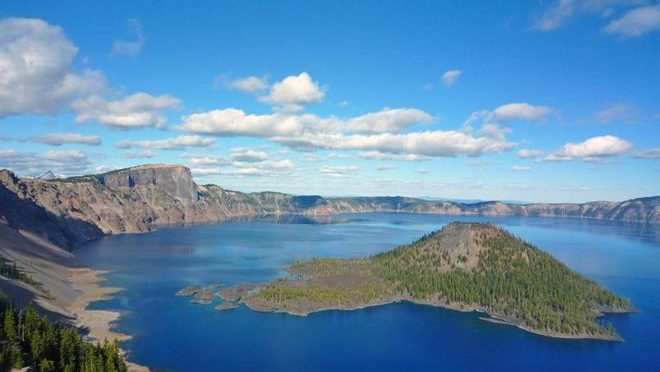Another moving throng attracts us. We find the Indian drum beating and the chant ascending from the centre of a swaying circle, in which we can watch the movements of the various dances, see the feats of war personated, hear the wild whoop, and see the tomahawk gleam–all transpiring in the skillful mazes of the mysterious dance. Here the Indian wears paint and feathers, and decks out his person with robes of fur and braided moccasin, displayed as the swaying movements call each muscular limb into play. Such was Yainax in the aforetime, and such it is not today. Yainax remains a memory of the past, and is memorable still, because it was the favored spot of the wide east country where the tribes met on neutral ground. The primitive race has dwindled and is passing away; the places that knew them shall soon know them no more.
One bright morning a friend undertook to pilot me to an interesting wonder region, high up among the loftiest summits–a very land of mystery, born of volcanic throes. The beautiful valley of Klamath Lake rests on a bed of volcanic ashes, pumice stone as light as cork drifts on its prairie reaches, and the craters, in whose furnaces these cinders were burned, look down on us from the chimneytops of the Cascade Range. Distant perhaps thirty miles away is a snowy cluster of heights, and bedded among them, walled in with precipices that forbid a shore and leave no outlet–deep down the sheer walls–is Crater Lake. So far as I know, there has never been a record made of this expanse of water, and I mistrust my pen when I attempt to describe this greatest wonder of Klamath Land. For fifteen miles we galloped over the beautiful and deep-grassed prairie, with an occasional reach of timber to give variety and to tone the pleasant summer sun with its interval of shade. On the way we lunch at the tent restaurant that has followed the army to Fort Klamath, and rest there while the troops stand guard over the captive Modoc nation. The tents that bivouac on the greensward in the distance look up to the Stars and Stripes that float above the parade ground, and across it to the buildings and residences of the regular garrison, and, all combined, make a pleasing contrast to the unbounded fields we have passed and those that lie beyond–yes, bounded by paneled mountains and well-laid hills, but unfenced by the enclosing grasp of man. On through the deep-worn prairie trail, with the tall grass sweeping the stirrup, and the bloom and fragrance of many a flower coming up from the meadow depths to give us their swift greeting.


